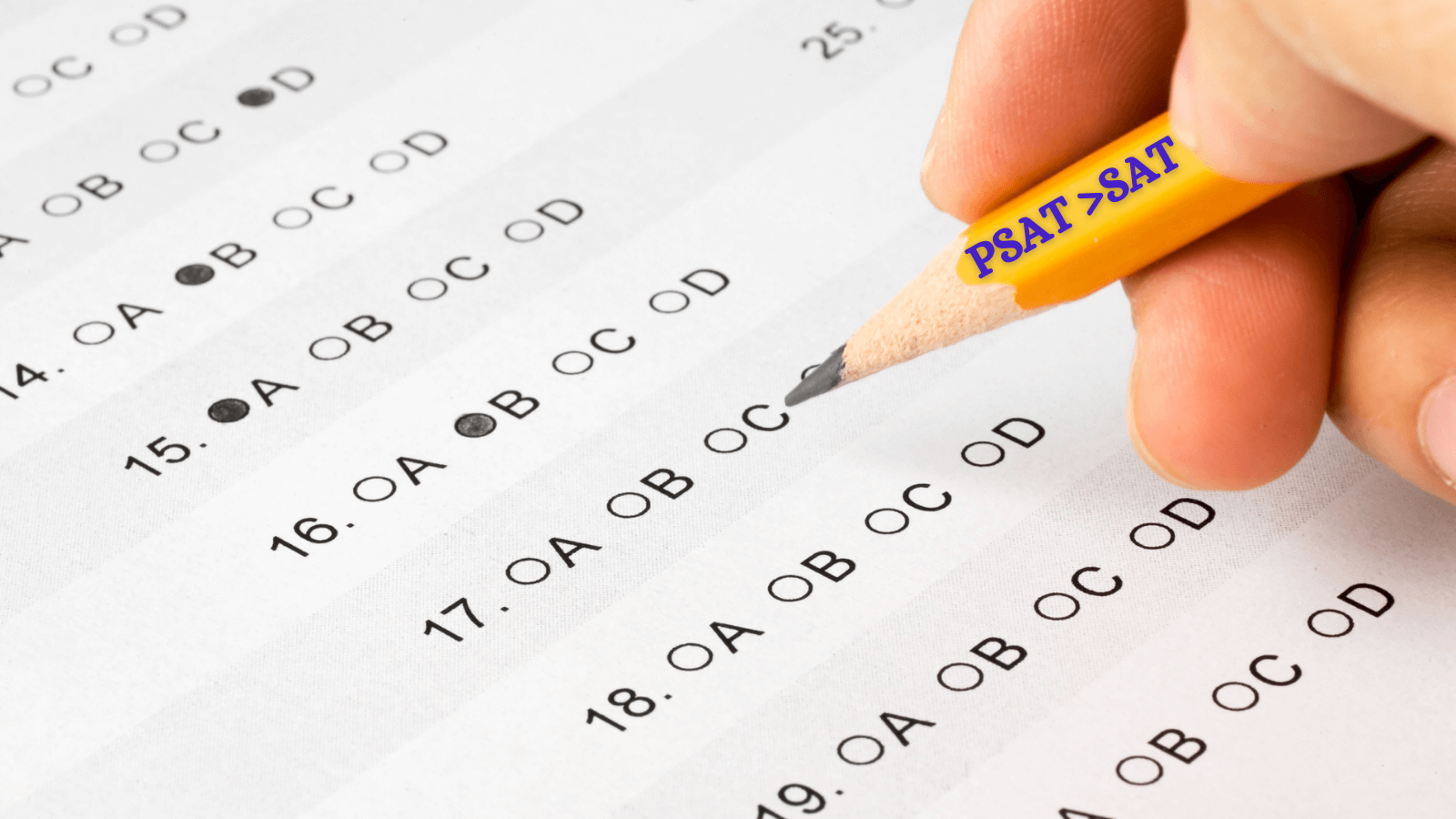Student-centric advice and objective recommendations
Higher education has never been more confusing or expensive. Our goal is to help you navigate the very big decisions related to higher ed with objective information and expert advice. Each piece of content on the site is original, based on extensive research, and reviewed by multiple editors, including a subject matter expert. This ensures that all of our content is up-to-date, useful, accurate, and thorough.
Our reviews and recommendations are based on extensive research, testing, and feedback. We may receive commission from links on our website, but that doesn’t affect our editors’ opinions. Our marketing partners don’t review, approve or endorse our editorial content. It’s accurate to the best of our knowledge when posted. You can find a complete list of our partners here.
What is the GMAT? Everything You Need to Know
 By
Zach Skillings
By
Zach Skillings 
Zach Skillings is the Scholarships360 Newsletter Editor. He specializes in college admissions and strives to answer important questions about higher education. When he’s not contributing to Scholarships360, Zach writes about travel, music, film, and culture. His work has been published in Our State Magazine, Ladygunn Magazine, The Nocturnal Times, and The Lexington Dispatch. Zach graduated from Elon University with a degree in Cinema and Television Arts.
Full BioLearn about our editorial policies

Maria Geiger is Director of Content at Scholarships360. She is a former online educational technology instructor and adjunct writing instructor. In addition to education reform, Maria’s interests include viewpoint diversity, blended/flipped learning, digital communication, and integrating media/web tools into the curriculum to better facilitate student engagement. Maria earned both a B.A. and an M.A. in English Literature from Monmouth University, an M. Ed. in Education from Monmouth University, and a Virtual Online Teaching Certificate (VOLT) from the University of Pennsylvania.
Full BioLearn about our editorial policies

The previous edition of the GMAT Exam retired as of February 1, 2024. The former GMAT has been replaced with the updated version of the exam called the GMAT Focus Edition.
If you have plans to attend business school, you’ve probably heard of the GMAT. It’s a standardized exam often required for admission to graduate business programs (MBA). Here’s everything you need to know about the GMAT.
Related: All about the GRE
Why do business schools use the GMAT?
The Graduate Management Admission Test (GMAT) is taken by students seeking admission to an MBA program. The test is an assessment of the skills that matter most in business. Along with your work experience, academic record, and entrance essays, your score on the GMAT assesses your readiness for the rigors of an MBA program. While your GMAT score doesn’t define your application, scoring highly certainly increases your chances of admission. Most business schools look for students who have scores within a certain range. The more competitive the school, the higher your score needs to be.
Also see: Tips to reduce test taking anxiety
What is on the GMAT?
The GMAT consists of the following 4 sections:
- Analytical writing assessment
- Integrated reasoning
- Quantitative reasoning
- Verbal reasoning
Test-takers choose the order in which they complete the sections. Each section is timed, with the total test taking just under 3.5 hours to complete. Let’s break down each section:
1. Analytical writing assessment
Time limit: 30 minutes
Number of questions: 1 essay prompt
This is the “essay” section of the test. It measures your ability to think critically and communicate your ideas. You’ll be tasked with critiquing a brief argument and discussing the soundness of the author’s evidence and reasoning. Arguments can involve topics of general interest related to business, or a variety of other subjects. Specific knowledge of the essay topic is not necessary. Only your ability to write analytically is being tested here. You should identify and analyze key parts of the argument, organize your ideas logically, and connect your statements with clear transitions. Take a few minutes to evaluate the argument and plan your response before writing.
2. Integrated reasoning
Time limit: 30 minutes
Number of questions: 12
The Integrated Reasoning section measures how well you can use data to solve complex problems. Many questions require more than one response, all of which must be answered correctly to receive any credit. Test-takers are allowed to use an online calculator with basic functions. This section consists of four types of questions:
1. Multi-Source Reasoning
These questions measure your ability to analyze data from multiple sources such as text passages, tables, and graphics. You must recognize discrepancies between the sources of data, draw inferences, and determine whether the data is relevant.
Sample multi-source reasoning question
2. Table Analysis
These questions measure your ability to sort and analyze a table of data (like a spreadsheet) to determine what information is relevant and meets certain conditions.
Sample table analysis question
3. Graphics Interpretation
These questions measure your ability to interpret information presented in a graph (scatter plot, x/y graph, bar chart, pie chart, or statistical curve distribution) to determine relationships and maker inferences.
Sample graphics interpretation question
4. Two-Part Analysis
These questions measure your ability to solve complex problems. They could be quantitative, verbal, or some combination of both. The format is intentionally versatile to evaluate your ability to make trade-offs, solve simultaneous equations, and discern relationships.
Sample two-part analysis question
3. Quantitative reasoning
Time limit: 62 minutes
Number of questions: 31
This section evaluates your ability to reason mathematically, solve quantitative problems, and interpret graphic data. Questions require some basic knowledge of algebra and geometry, but you’re not being tested on your math skills. The difficulty of the questions stems from the logic and analytical skills required, rather than the underlying math skills. YOu won’t be able to use a calculator. This section consists of two types of questions:
1. Problem Solving
You’ll be asked to use logic and analytical reasoning to solve quantitative problems. These questions provide multiple choice responses.
2. Data sufficiency
You’ll be asked to analyze quantitative problems, recognize which data is relevant, and determine if (or when) there is enough data to solve the problem.
4. Verbal reasoning
Time limit: 65 minutes
Number of questions: 36
The Verbal Reasoning section measures your ability to read and understand written material, evaluate arguments, and express ideas effectively. This section consists of three types of questions:
1. Reading Comprehension
Requires reading passages and interpreting the material, drawing inferences, or applying to another context. Passages discuss topics such as social sciences, humanities, physical and biological sciences, and business-related fields.
2. Critical Reasoning
After reading a short passage, you’ll determine which of the five answer choices strengthens or weakens the argument made. You may also have to select which answer choice reveals why the argument is flawed.
3. Sentence Correction
You’ll be presented with sentences and asked if they’re grammatically and structurally sound, and if they express an idea effectively. Pay close attention to grammar, word choice, and sentence construction for these questions.
What is a good GMAT score?
Separate sections of the GMAT are scored individually, then combined and scored on a 205-805 scale. This combined total score is the one that business schools and MBA programs care about the most. The average mean score is currently 546, and two thirds of test-takers score between 400 and 600. A good score is one that meets the expectations of your MBA program.
Top-tier business schools, such as Stanford and Columbia, prefer applicants with scores of 700 and above. Meanwhile, less selective schools don’t require such high scores. It all depends on the competitiveness of the program. So, you’ll be best off if you create a goal for yourself by viewing the average scores of admitted applicants to the MBA programs you’re considering.
How important is the GMAT to the admission process?
Your GMAT score is only one component of your business application, and probably won’t make or break your chances of admission. An impressive GMAT score won’t totally make up for a weak application. In the same sense, it’s possible to overcome a lower GMAT score with a strong application. Professional experience, letters of recommendation, and entrance essays are also key components of the application. Business school hopefuls should strive to put together a well-rounded application rather than focusing exclusively on the GMAT. Nonetheless, having a higher GMAT score will certainly improve your chances of admission at selective schools.
How do I register?
Register to take the test at the official GMAT website. You’ll receive a list of dates, times, and testing centers near you. The registration fee is $250. We recommend you take the test at least three to four months in advance of your application deadline. That way, you’ll have plenty of time to retake the test if needed.
How should I prepare?
Having a solid study plan is key to performing well on the GMAT. It makes sense that students who study more generally score higher. Test-takers with scores between 600-690 spent a median of 80 hours studying, while those with scores above 700 spent a median of 90 hours. Taking a free GMAT exam practice test is a good place to start. From there, you can identify your strengths and weaknesses and know what to study for. Through solid preparation, you can earn a good GMAT score and be well on your way to business school. Good luck!
Keep reading…
- Top MBA scholarships in 2021
- Grad school financing options
- Can I defer my loans if I go to grad school?
- Getting into graduate school with a low GPA
Frequently asked questions about the GMAT
Question




 SAT" printed on his pencil">
SAT" printed on his pencil">
